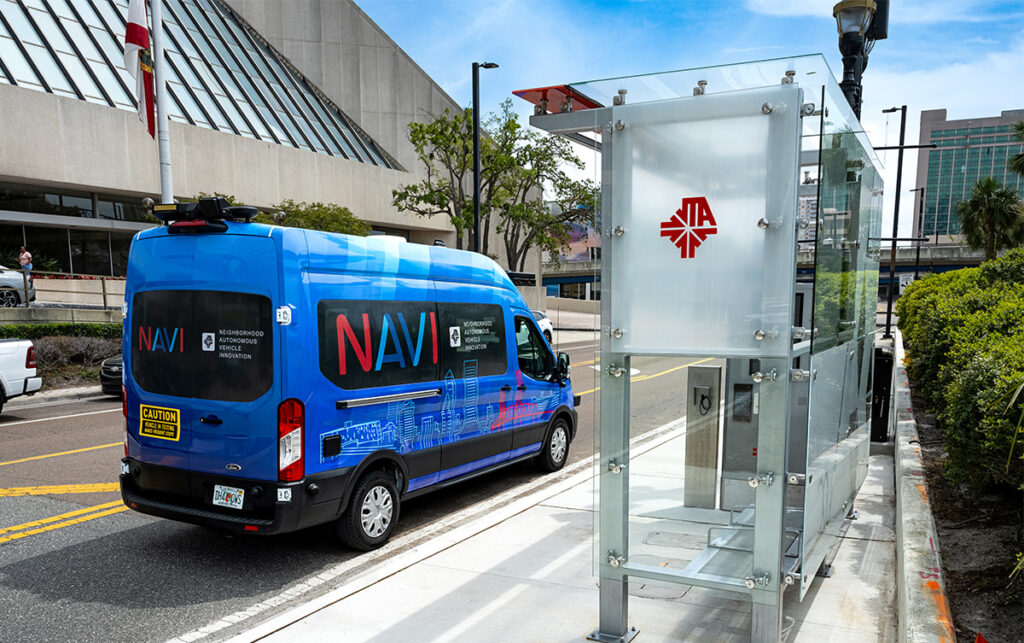Jacksonville: The AV Playbook
9/29/2025

No longer a hazy vision in a far-off future, driverless cars are a mode of transportation being used to move thousands of passengers each day in the U.S. Self-driving vehicles are regularly spotted in San Francisco, Atlanta, Austin, and elsewhere, while passengers regularly hail Zoox robotaxis on the streets of Las Vegas.
Now, a groundbreaking venture in Jacksonville, FL, has put into place the nation’s first use of driverless cars in a fixed-route service. Jacksonville’s Neighborhood Autonomous Vehicle Innovation (NAVI) is in service 12 hours a day, Monday to Friday, shuttling riders to any one of 12 stops along a 3.5-mile corridor through the city’s downtown, connecting passengers to other local and regional transportation options.
“We have received some great feedback overall from the riders of the system. We’ve had people not just in Jacksonville but come from beyond to experience it,” Greer Gillis, senior vice president and chief infrastructure & development officer for the Jacksonville Transportation Authority, said at the From Pilots to Service: The State of AV Deployments in Public Transportation across the U.S. session at APTA’s TRANSform in Boston, MA.

Gillis was joined in the session by Moderator MJ Maynard-Carey, APTA immediate past chair, and chief executive officer, Regional Transportation Commission of Southern Nevada, Las Vegas; Dinero Washington, CEO, Metro Management, Inc. & Shreveport Transit Management (SporTran); and Kevin Reid, CEO and chairman of the board, Beep.
She noted that while some of the early positive feedback has come from leisure-time riders, like tourists and retirees, others are praising it too. “Because it’s public transportation, we’re filling a need,” she said about the service, which began operations June 30.
“Employees in the downtown area have said, ‘I use this every day. This is helping me get from one point to my job and beyond. I’m grateful that you’ve put this in place’.”
Gillis said that creating the service was no small task: It took “five years to be able to put the plan together,” with the support of multiple partners, including the USDOT, as well as “BEEP and other manufacturers to come up with a retrofitted Ford E-Transit vehicle.”
The challenge for officials in Jacksonville, Gillis explained, was presenting “something innovative—not just the autonomous vehicles themselves being innovative … when you’re deploying something for the first of its kind, there’s not a playbook out there.”
Being a trailblazer in standing up the nation’s inaugural driverless mass transit automated vehicle program means that Jacksonville can be the model for other localities hoping to put something similar in place.
“Everyone else that comes along won’t have to deal with some of the challenges we had to overcome,” Gillis said.
View more images from TRANSform.